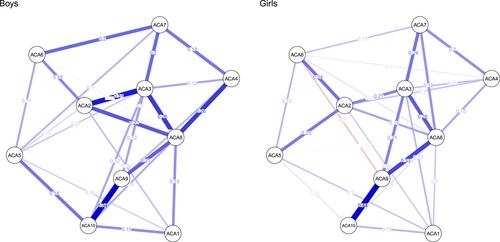Exploring networks of complex developmental trauma symptomatology among children and adolescents involved in child welfare
Abstract
Background
Clinical presentations of child and adolescent psychopathology can vary systematically for boys and girls. While network analysis is increasingly being applied to explore psychopathology in adults, there is a dearth of network studies considering differences in symptoms for boys and girls, particularly in developmental trauma-related symptomatology.
Methods
This study involves rural children (n = 375, 39.47% girls) and adolescents (n = 291, 51.20% girls) involved with child protection services in Ontario, Canada. Caregivers completed the Assessment Checklist for Children or Adolescents within the first 6 months of care. Psychometric network analyses were conducted using subscales for boys and girls. Differences were examined via network comparison permutation tests, moderated network models, and independent t-tests.
Results
Attachment-related interpersonal difficulties were the most central nodes in the child and adolescent networks for both boys and girls. Emotional dysregulation also had high strength centrality for adolescents. While network comparison tests found the overall network structures and global network strength to be invariant between boys and girls for children and adolescents, moderated network models and independent t-tests revealed several differences with regards to the expression of specific symptoms. Among children, girls exhibited more indiscriminate and pseudomature interpersonal behaviors, whereas boys expressed significantly more non-reciprocal interpersonal behaviors and self-injury. Adolescent girls exhibited more behavioral dysregulation and suicide discourse in the moderated network model; t-tests also indicated higher levels of emotional dysregulation, negative self-image, and other items considered clinically important complex trauma symptoms (e.g., distrust of adults, confused belonging).
Discussion
This study supports evidence of differences in the expression of complex trauma symptomatology for boys and girls. Additionally, girls exhibit more symptoms, in general. Consistent with the transdiagnostic conceptualization of the consequences of developmental trauma, findings demonstrate the primacy of attachment-specific difficulties and emotion dysregulation.



 求助内容:
求助内容: 应助结果提醒方式:
应助结果提醒方式:


